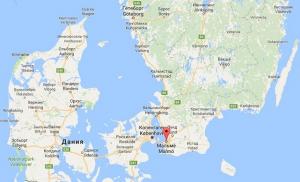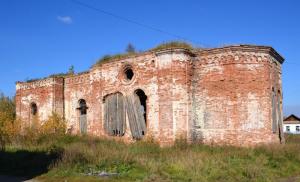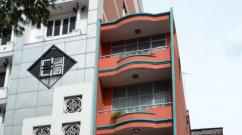Volcano Agung woke up or everything you really need to know about the eruption. The eruption of Mount Agung in Bali: flights have been cancelled, tourists are asked to be careful. The eruption of Mount Agung Bali today
Volcano Agung on the island of Bali began its eruption on the morning of April 21, throwing a two-kilometer column of smoke and ash into the sky, which then settled in the areas of Karangesem, Bangli and Klunglung. The ash emission was recorded at 18:25 local time, and it was accompanied by a very strong roar, reports the Daily Mail. The eruption has been assigned the third danger status out of a possible four.

Authorities are distributing masks to residents to protect their respiratory tract from the ash. It is forbidden to approach the volcano closer than four kilometers. However, some climbers ignored the warning and tried to climb the mountain.
Indonesian authorities said the eruption did not affect main airport Bali, international airport Ngurah Rai, and it is still operating as normal. But the volcano's continued activity could mean thousands of travelers could become trapped.
During the 2018 eruption, Jetstar, Qantas, AirAsia and Virgin Australia canceled flights at Denpasar airport and 5,000 people were stranded on the island.

Thousands of people have been evacuated from the area since seismic activity resumed on the mountain in 2017 and small eruptions occur regularly. Two other active volcanoes, Bromo and Merapi on the island of Java, are also on alert.
“This is a normal situation with an active volcano and the public should not panic as long as they remain outside the danger zone,” said national disaster mitigation agency spokesman Sutopo Purwo Nugroho.

Some foreign climbers, however, ignored the exclusion zone and attempted to climb Mount Agung. They had to be evacuated in a rescue operation.
Indonesia is prone to earthquakes and volcanic eruptions because the archipelago is located on the Pacific "Ring of Fire" that extends along the coast Pacific Ocean to west coast Northern and South America. Local government seismologists in the country monitor more than 120 active volcanoes.
On a small territory of the island of Bali there are two active volcano: Batur and Agung.

Let us remind you that last eruption Mount Agung occurred in 1963. The disaster killed more than 1,100 people.
The powerful eruption of Agung, according to climatologists, can “slow down” global warming for about 5 years and temporarily cause a slight cooling.
By the way, an analysis of the statistics of eruptions in past decades and centuries shows that Batur and Agung erupt together or alternately. Agung and Batur share a common system of underground channels through which lava can move between their magma chambers, coming from a common magma source located at a depth of 10-30 kilometers.
In Indonesia, on the island of Bali, the sacred volcano Agung has awakened. The island's airport was temporarily closed and 450 flights were cancelled. Locals consider the volcano sacred and pray when it wakes up.
Volcano Agung on the island of Bali in Indonesia is in its active phase. On June 27, it began throwing ash to a height of 2.5 kilometers within a radius of four kilometers. By June 29, the eruption became stronger, and Indonesian authorities decided to close the main airport. In addition to him, two small companies suspended their activities in Bali air harbors who made domestic flights.
“The Ngurah Rai International Airport is closed on June 29 from 03:00 to 19:00 (from 22:00 Moscow time on Thursday to 14:00 Moscow time on Friday) due to the ash of the Agung volcano,” they wrote on official airport Twitter page.
450 flights were canceled in Bali, affecting almost 75 thousand people. A four-kilometer security zone was organized around the volcano. About 300 people were evacuated from the disaster zone. Bali is the most popular island Indonesia among Russians. At the end of 2017 alone, almost 100 thousand of our compatriots visited it.
The Federal Tourism Agency reported the eruption of Mount Agung and urged Russians to take this information into account. " Federal agency The Ministry of Tourism recommends that Russian tourists who are in Bali, as well as those planning a trip to the island in the coming days, take into account the information about the temporary closure of Ngurah Rai Airport, follow messages from local authorities and confirm departure dates with tour operators,” the Federal Tourism Agency said in a statement. .
The department reported that it is in touch with the situational crisis center of the Russian Foreign Ministry and the Russian Embassy in Indonesia. On at the moment requests from Russian tourists not received.
The airport in Indonesia opened on June 29. “The island authorities recommend that all vacationers pay close attention to official information from hotel management and request the necessary information on airport operations and flight schedules. Tourists whose flights were canceled due to the activity of the Agung volcano will be offered special prices for accommodation in hotels in Bali,” the press service of the Indonesian Ministry of Tourism told Interfax.
Uncharacteristic disasters
A local resident and founder of the BaliStalker project AlexStalker told “360” that he is located at a distance of 40-50 kilometers from the Agung volcano. The eruption began on June 28 and is still ongoing, with only some interruptions. “Flights were suspended for some time, but now flights have been restored,” he noted.
Volcanoes erupt almost every day in Indonesia, so you can rest easy
AlexStalker local resident.
The interlocutor said that periodic activity of the volcano was recorded back in November 2017. But what is happening on the island now cannot be called an eruption. “At the moment there are only emissions of ash and smoke,” said a local resident. He clarified that there is no danger of staying on the island.
“For safety reasons, you should stay no closer than 15 kilometers from the crater itself, from where you can enjoy the wonderful spectacle provided to us by our wonderful planet,” the interlocutor said.
“Agung has awakened in Bali, and it immediately becomes clear why the Balinese revered him as the most important shrine on the island. The true ruler of the island! Manku Jati regarding the Agung eruption said that they prayed all night. On the island everyone is discussing the awakening of the volcano; the airport was closed at night. But, unlike the eruption in November last year, everyone is calm and continues to lead normal lives,” he captioned the photo.
There were no casualties, no panic, everything was quiet and calm, just smoking
Anna Sinyavskayalocal resident.
Bali resident Anna Sinyavskaya told “360” that such disasters occur due to uncharacteristic summer period rains. “A lot of water got into the crater of the volcano, which is why it started smoking,” she said.
Flights were indeed canceled on the island - passengers could neither fly nor fly to the island. The interlocutor noted that the last time, in November 2017, the eruption was much larger.
Deadly Volcano
At the end of November 2017, the Agung volcano, which locals consider sacred, also showed activity. The danger level was so high that the country's authorities evacuated about 100 thousand people. Then dark smoke and ash rose to a height of 3.4 kilometers above the top of the volcano. In its past activity, the volcano even spewed flames.
Ngurah Rai Airport was also closed in November. Thousands of tourists, 300 of whom were Russians, could not leave the resort. Among them was also Russian producer Maxim Fadeev.
However, the deadliest eruption occurred in 1963. Then the highest point of Bali was the life of 1.6 thousand people, and 220 thousand had to temporarily leave their homes.
people shared the article
Located in the eastern part of the island of Bali, Mount Agung is a very revered and significant place for Indonesians. The local population calls Mount Agung sacred and considers it one of the most important attractions in Indonesia. Every year thousands of tourists came to the foot of the volcano to admire the natural beauty and get in touch with the mystery that shrouds this place. This was the case until September 2017, when seismologists recorded strong tremors at the foot of the mountain.
Eruption of Mount Agung
People on duty at the observation post witnessed the release of a steam plume on September 29, 2017. However, no ash clouds were observed. Exactly the same plume of steam was noticed 3 weeks later. At the foot of the mountain at this time, 1052 tremors were recorded.
On November 21, 2017, the Indonesian disaster management agency issued a volcanic warning level four. This level indicated that a volcanic explosion could occur in the very near future. At the same time, at the end of November 2017, none of the experts could confidently name the exact date of the volcanic eruption.
Seismologists recorded the eruption of Mount Agung on November 21. On this day, volcanic ash rose to a height of approximately 700 meters from the crater. On November 27, the eruption repeated. A column of smoke rose above the sacred mountain to a height of 4000 meters from the crater. In connection with this, the eruption was assigned a maximum level of danger.
Indonesians living within a 7.5 km radius of Mount Agung were urgently evacuated. People were given special breathing masks. Some villages located in close proximity to the volcano were covered with a layer of ash. Despite the current situation, the authorities were unable to force some local residents to urgently leave their homes. People did not want to leave their pets unattended and evacuate to safer places to live.
But after the tallest smoke plume was recorded over the Bali volcano on November 27, seismologists have come to the general conclusion that a larger volcanic eruption, which could occur in the very near future, is almost inevitable.
In November 2017, approximately 40,000 Indonesians fled their homes that were in close proximity to the volcano. They set up temporary camps after an exclusion zone was established around the sacred Mount Agung, the length of which, according to various sources, reaches 10-12 km.
Fire flashes over the Agung volcano on the island of Bali were observed at night. The Indonesian Disaster Prevention Agency has made statements that it is very dangerous to be in the exclusion zone. Villages located within a radius of up to 10 km were covered with a dense layer of thick ash, which made visibility very difficult. The evacuation of people continued constantly.
The sky above the volcano was covered with clouds of ash. As is known, ash thrown into the air causes damage to aircraft engines. Due to the current conditions, dozens of flights were canceled every day.
The chronology of events taking place on the island of Bali has been compiled from September 2017 to the present:
- Late September 2017: a deep crack, about 80 m long, was formed in the crater of the volcano. Experts calculated that there may be about 15 million m³ of magma inside the volcano, which moves towards the crater, but cannot find a way out.
- Early October 2017: for 2 weeks, earthquakes regularly occur near the volcano, which indicate that magma cannot escape, breaking through the interfering solidified lava.
- November 27, 2017: seismologists set danger level 4; a magma eruption is expected any day now. Ngurah Rai Airport is closed due to the current situation. The volcano smokes and releases huge columns of ash. Lava eruptions are observed at night.
- November 30, 2017: a column of light gray ash appeared above the crater. In the afternoon, the amount of ash emissions decreased significantly. The airport has resumed its operations.
- Early December 2017: there are no visual signs of volcanic activity; transparent water vapor periodically appears, spreading over a distance of up to 1.5 km.
- Mid-December 2017: experts noted a sharp reduction in harmful emissions, the height of the ash column decreased to 500-1000 m. Seismologists reduced the danger level to two.
- Late December 2017 – mid-January 2018: most of the time the volcano is in a calm state, but sometimes ash columns are released, 2-3 thousand m high.
- Mid-February 2018: the situation continues to remain calm, and therefore local authorities allowed Indonesians to return to their homes.
- March 2018: after a relative calm that lasted several months, the volcano began to be active again.
Agung's last eruption occurred in 1963. The natural disaster claimed the lives of more than 2,000 people.
Current news
On March 15, the following news came from the island of Bali: at the moment, the Indonesian Disaster Prevention Agency has again recorded a small eruption of Mount Agung. Grayish smoke appeared from the crater of the volcano, maximum height the smoke column was approximately 700 m.
Authorities urge local residents not to lose calm and not succumb to general panic. The exclusion zone currently reaches 6-7.5 km.
According to Indonesia's chief seismologist, there are many examples in which the peak of volcanic activity lasted for 6 years. And a large-scale eruption that destroys everything in its path may ultimately not happen at all. After the specified period, the activity of tremors gradually begins to subside.
Is it possible to fly on vacation?
Due to the latest news, the Indonesian Ministry of Foreign Affairs has issued a special warning for tourists who are currently in Bali. According to this warning, if ash clouds appear from the crater of a volcano, before leaving for the airport, the tourist must coordinate departure from the country with his travel agent or airline representatives.
The Russian embassy in Indonesia calls on Russian citizens to temporarily refrain from traveling to Bali.
Volcano Batur
The highest point of another famous volcano in Bali, called Batur, is located at an altitude of 1717 m above sea level. Batur has three craters that periodically emit small bursts of grayish smoke and ash, and tremors can be felt at the base of the volcano. The top of the volcano is covered with dark spots. These are traces of solidified lava that remained after destructive volcanic eruptions that date back to 1917, 1926-1929, 1947 and 2000.
In 2000, the smoke column rose 300 m above the crater. There was no serious damage, but the Indonesians were very alarmed by the activity of the volcano, because until that moment no eruptions had been observed for half a century. Seismic activity was recorded by specialists in the fall of 2009. For several months, there was an increase in volcanic activity, but by the summer of 2010, seismologists made a statement that an eruption of the Batur volcano was not expected in the near future.
Indonesians use numerous rituals to appease the spirits of Mount Batur. The territory in which it is located is very revered local residents. No wonder they built along its perimeter large number temples. To avoid volcanic activity, Indonesians held a special ceremony. The people sewed a large sarong and wrapped it around Mount Batur. They prayed at the foot of the volcano and came to him with offerings.

Climbing volcanoes
Does not require any specific preparation. However, it is not recommended to climb to heights on your own. Before you start climbing, you need to find an experienced guide. You can climb the Batur volcano within two hours, making several stops along the way for a little rest and a snack.
Guides accompanying tourists to the volcano crater must have a walkie-talkie with them in order to signal for help if necessary. These people are well versed in the area and know how to reach the volcano crater in the shortest possible way.
The main experience for which people strive to get to the top of the volcano is the sunrise. The sunrise seen in the crater of the volcano will remain in the memory for a long time, and the magnificent photographs taken in this place will leave the best memories of your trip to Bali.
Morning transfer to the volcano
At the time of the meeting, the driver of the transport company will arrive at your hotel or villa Maps Bali Tour. You must wait for the car at the hotel reception or at the entrance to the villa. When all participants are assembled, the transfer will go to the foot of the volcano. Your guide will meet you at the parking lot. He will give you flashlights for the hike.
Climbing
The ascent will begin around midnight. In total it takes from 4 to 6 hours. There are several stops planned during the climb so you can rest. In half this time you will cover two-thirds of the way. The remaining third is the most difficult section: you have to climb a slippery rocky slope at an angle of 45 degrees.
At dawn, the guide will offer you tea, coffee, buns and bananas. You will have plenty of time to take photos and have breakfast. After this you will descend back to the foot of the volcano. The descent will also take from 4 to 6 hours. A driver will be waiting for you in the parking lot.
Transfer to the hotel
After all the guests are assembled, we head to your hotel. The time of arrival at the hotel depends on traffic jams and the distance of your hotel.
Important information:
- In accordance with clause 7.3.3 of the user agreement, the site company is not responsible for weather conditions on your ascension dates. The weather in the Agunga volcano caldera is unpredictable, with fog, rain and low visibility possible during the ascent, especially during the rainy season.
- Choose comfortable, comfortable clothes and shoes. The route to the top of Agung passes through several zones: from the dense jungle at the base to the slippery rocks at the top.
- People with joint and heart diseases are not recommended to climb.
Reviews
- div > .user-text">
Natalia 11/11/2016
Agung (company: Maps Bali Tour)
Super
We watched the sunrise on the mountain several years ago, but when we returned to Bali we couldn’t resist climbing again. If you have good physical fitness, then it will be easy for you, but if not, you will have to work hard. But believe me, what you see is worth it.
- div > .user-text">
Julia 10/12/2016
Agung (company: Maps Bali Tour)
Super
We climbed the Agung volcano. Height 3150 m. It was difficult. It was incredibly difficult. Shortness of breath, clogged feet...things wet from sweat. When you get up, you don’t want to eat or drink. When the surface becomes rocky, it becomes cold and windy. Very strong wind. And here it’s scary and very dangerous. But when you reach the height, you scream like crazy. Such a view opens up before you... until you see it yourself, you can’t imagine it. It takes you even longer to go down than it took to go up. Sneakers, everyone is killing it. Then you definitely can’t walk for half a day, and you don’t want to. It’s worth going there for the view, emotions and personal best. But I recommend taking warm clothes. And prepare yourself for the fact that as you climb up, you will curse yourself for deciding to do this one day.
- div > .user-text">
Mike 09/24/2016
Agung (company: Maps Bali Tour)
Super
We got up at night. The road, as we already learned at dawn, goes along the fallen lava, through the jungle. Take more water with you, yes, it’s hard to climb with it, but you won’t be able to buy it anywhere, even before the climb. Wear very comfortable shoes and do not eat a heavy dinner. You will have to climb over huge cobblestones, sometimes even jumping over them, and with every meter it becomes more and more difficult to climb. At the end of the climb you will be rewarded with a stunning view. This climb requires good physical fitness.
- div > .user-text">
Anna 07/04/2016
Agung (company: Maps Bali Tour)
Super
We were on holiday in Bali in June. In two weeks we visited almost all corners of Bali, went in for water sports, but the most vivid impression, without a doubt, was climbing the peak of Mount Agung. If you have good physical fitness and don’t feel dizzy from heights, then I highly recommend doing this climb! Shrouded in darkness and frightening with incomprehensible sounds, the night jungle, narrow paths with cliffs at the edges, a sharply changing landscape, climbing steep rock slopes, a bewitching view of the island in full view, and, finally, a huge crater bowl at the peak - this is the minimum of what awaits you .
- div > .user-text">
Daria 02/21/2016
Agung (company: Maps Bali Tour)
Super
The incredible power of the mountain and the magnificent view that opens from the mountain are worth all the effort. But in order to get there, you still need to prepare. It’s better to climb Agung at night, when it’s not too hot. It can be chilly at the top, so take a jacket. Climb from two to four hours, depending on physical fitness. You should take water and chocolates and sandwiches with you. Flashlights and sneakers are a must. A camera is a must. If Mr. Agung seems too much for you, then take a closer look at Batur. It is lower, but no less beautiful.
- div > .user-text">
Maria 01/23/2016
Agung (company: Maps Bali Tour)
Super
Amazing feeling to meet the sunrise at the very high point Bali islands - Agung volcano! An endlessly star-strewn sky, green island like a palm with traces of lava from a previous eruption, a crater, a shadow from a volcano, neighboring islands and mountains, white fluffy clouds!! And it's all in one place!! But to enjoy this beauty you will have to try very hard!! Let's lift heavy! Only for people in good physical shape! Be sure to take a guide
Bookings for flights from Moscow to the island of Bali, where the airport is closed due to a volcanic eruption, have decreased tenfold today. Volcano Agung has not ejected such a column of ash for half a century. And now, according to various sources, it rises to a height of four to eight kilometers. Everything within a radius of eight kilometers is covered with a thin layer. Among those who cannot fly from the island are from five to six thousand of our compatriots.
The red-hot wall of smoke and ash over the island of Bali exceeds 4 kilometers. An orange glow at the base is a sign that lava has already gushed from the mouth of Mount Agung. The sacred mountain woke up over the weekend. Today the alarm level has been raised to the maximum level - level four. Cooled streams of volcanic rock mixed with water and mud - here they are called lahars - reached the foot of the mountain by morning, threatening the villages located nearby. About 100 thousand people were ordered to leave the adjacent zone within a radius of 12 kilometers.
There is a high probability that an even more powerful eruption will occur in the near future than the day before.
There is a real collapse at the only airport in Denpasar. Along with local residents, about 60 thousand tourists are held hostage by the volcano and cannot fly from the resort island. Five thousand flights have been canceled and until Agung calms down, not a single airline will risk taking the plane into the air. There are now about 6,000 Russian citizens in Bali. But our people are not so easily frightened by the local vagaries of the elements.
“We live 60 kilometers from the volcano. Yesterday they reported that some flights had been cancelled, today the airport was closed. Last night we traveled 25 kilometers to the foot of the volcano. It’s very beautiful, the eruption of smoke and ash. We talked to the locals, they say it’s It’s not dangerous. Life goes on, schoolchildren go to school. We think that it will rise and calm down,” says Sofya Selina.
“The ashes began to settle, we are 30 kilometers away. Our house is in ashes, we understand that we need to move away from the volcano. small child, he is 5 months old. We need to go further. You are breathing normally at the moment. The most dangerous thing is the ten-kilometer zone, an explosion can occur there,” says Alexey Vimana.
Now the only way to leave Bali is by ferries. The Russian Embassy in Indonesia posts all the necessary information in social networks. Ferries transport passengers to neighboring islands. The airports there are still open.
The most powerful eruption in the history of mankind is considered to be the Indonesian stratovolcano Tambora. It is located next to the island of Bali. In 1815, more than 70 thousand people died from it, and because of the ash cloud that rose into the sky, the so-called “volcanic winter” began, which provoked crop failure and famine throughout the northern hemisphere.
Agung is a volcano of the same type. Its track record is not so impressive so far, but during the eruption in 1963-64, no one seemed to have enough. About one and a half thousand people died then, and even residents of Northern Europe observed the volcanic twilight.













